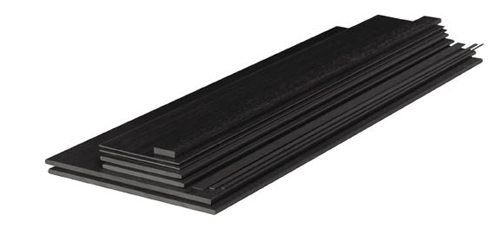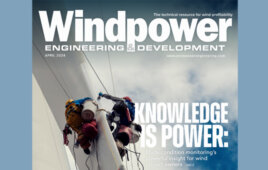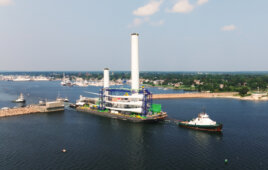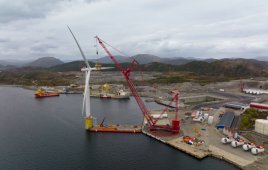Carbon fiber has proven itself favorably in the wind industry. When compared to traditional materials, carbon fiber allows for thinner, longer, stronger, stiffer, and lighter turbine blades. The result has been larger swept areas and more energy output. However, new demands to lower manufacturing costs without sacrificing quality have designers searching for ways to improve carbon fiber.

Zoltek says its pultruded carbon-fiber plates reduce manufacturing time and costs for turbine-blade manufacturers.
A common method of applying carbon fiber in turbine blades is with epoxy prepregs. The product is rolled out on the spar cap or structural member of the blade, then layered one over another to reach the needed thickness for each blade. The prepreg is then cured or hardened on the production floor. Although the process yields excellent structural properties, prepregs require cool storage and have a limited shelf life. Also, uni-directional fabrics present challenges in obtaining complete infusion.
To make the process of spar construction more efficient, Zoltek (www.zoltek.com), has developed “pre-cured” or “production-ready” carbon composites for turbine blades. These pultruded profiles are typically produced with a thermoset epoxy or vinyl ester resin in a proprietary low-cost, high-throughput process. The pultruded parts deliver optimized properties, such as high-fiber volumes, nearly zero void content, and locked-in filament alignment. Panex 35 carbon fiber tows are fed into the company’s proprietary impregnation and curing process that creates smooth carbon-fiber laminates. “This line of pultruded plates simplifies and reduces manufacturing costs for blade-makers and other end users,” says Zoltek CEO, Zsolt Rumy. “We also expect these products to speed the development of longer blades for higher megawatt wind turbines.” The fiber alignment that comes from pultrusion delivers consistently better overall properties in laminates than any other composite manufacturing process, adds Rumy.
Other ways the company has been pursuing improved blade design is by building thicker-ply carbon fiber prepregs that require fewer layers of material per blade. This cuts throughput time off each part and saves resources. Another way compresses the production line through proprietary prepreg installation tools. The company provides design support and the specialized tools required for efficient carbon-fiber installation. WPE
Filed Under: Featured




